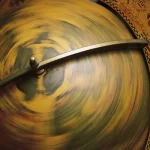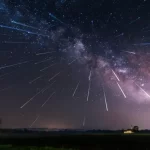Key Takeaways:
- ‘Oumuamua, the interstellar visitor that puzzled astronomers, has finally been identified as a comet with an unusual composition.
- Its strange behavior, resembling both an asteroid and a comet, can be explained by the presence of expelled hydrogen, which affected its orbit and lack of a typical comet’s tail.
- This finding dismisses earlier speculations about ‘Oumuamua being an alien spaceship, offering a more scientific explanation for its peculiarities.
- The study suggests that ‘Oumuamua likely originated as a water-rich comet near another star before being ejected and modified by cosmic rays during its interstellar journey.
- While the exact identity of ‘Oumuamua may remain a mystery, future missions like Comet Interceptor aim to be prepared for similar interstellar objects entering our Solar System.
Was it a comet, an asteroid, or perhaps something even more exotic? Since its fleeting visit to our Solar System in 2017, scientists have been racing to decipher the mysteries surrounding this interstellar wanderer. Now, a groundbreaking study published in Nature sheds light on the true nature of ‘Oumuamua, presenting compelling evidence that it was indeed a comet, albeit with a twist.
Lead researcher Jennifer Bergner, along with her team at the University of California, Berkeley, delved into the intriguing saga of ‘Oumuamua, dissecting its behavior and composition. Their findings, hailed as the most convincing model to date, offer a comprehensive explanation for the object’s anomalous trajectory and distinct appearance.
‘Oumuamua’s journey began on October 19, 2017, when it was first detected hurtling past the Sun at an astonishing speed of 87 kilometers per second. Its elongated, cigarlike shape, spanning between 100 meters and 400 meters, puzzled astronomers, sparking a flurry of hypotheses regarding its origin and nature.
NASA’s Hubble and Spitzer telescopes provided crucial insights into ‘Oumuamua’s composition, revealing its lack of a typical comet’s tail despite exhibiting comet-like behavior. This discrepancy confounded scientists until Bergner and her colleague, Darryl Seligman from Cornell University, proposed a groundbreaking explanation.
Their research suggests that ‘Oumuamua, initially a water-rich comet near another star, underwent a transformative journey through interstellar space. High-energy cosmic rays, ubiquitous in the galaxy, bombarded the comet, converting a significant portion of its water ice into hydrogen. This expelled hydrogen, upon the object’s approach to the Sun, propelled it forward, akin to a celestial rocket boost.
The absence of a visible coma or tail, typically associated with comets, can be attributed to the lightweight nature of molecular hydrogen, which lacked the momentum to drag substantial dust particles along its path. Bergner emphasizes that this phenomenon does not necessitate invoking exotic theories, as it aligns with known astrophysical processes.
Contrary to earlier speculations about ‘Oumuamua’s extraterrestrial origins, the study debunks the notion of it being an alien spacecraft, offering a more grounded interpretation rooted in astrophysical principles. Alan Fitzsimmons from Queen’s University Belfast commends the research for consolidating disparate observations into a coherent narrative, providing closure to the ‘Oumuamua saga.
However, not all astronomers are entirely convinced. Karen Meech from the University of Hawaii, Manoa, suggests that a conventional comet model could still suffice, highlighting the complexity of interpreting ‘Oumuamua’s enigmatic traits.
As ‘Oumuamua continues its journey beyond Neptune’s orbit, its identity remains shrouded in mystery, destined to evade definitive classification. Nevertheless, the study paves the way for future missions, such as Comet Interceptor, poised to unravel the secrets of interstellar visitors and deepen our understanding of the cosmic tapestry.
In the ever-expanding cosmos, ‘Oumuamua stands as a testament to the boundless curiosity of humanity, urging us to peer beyond the veil of the unknown and unlock the mysteries that lie scattered across the universe.


